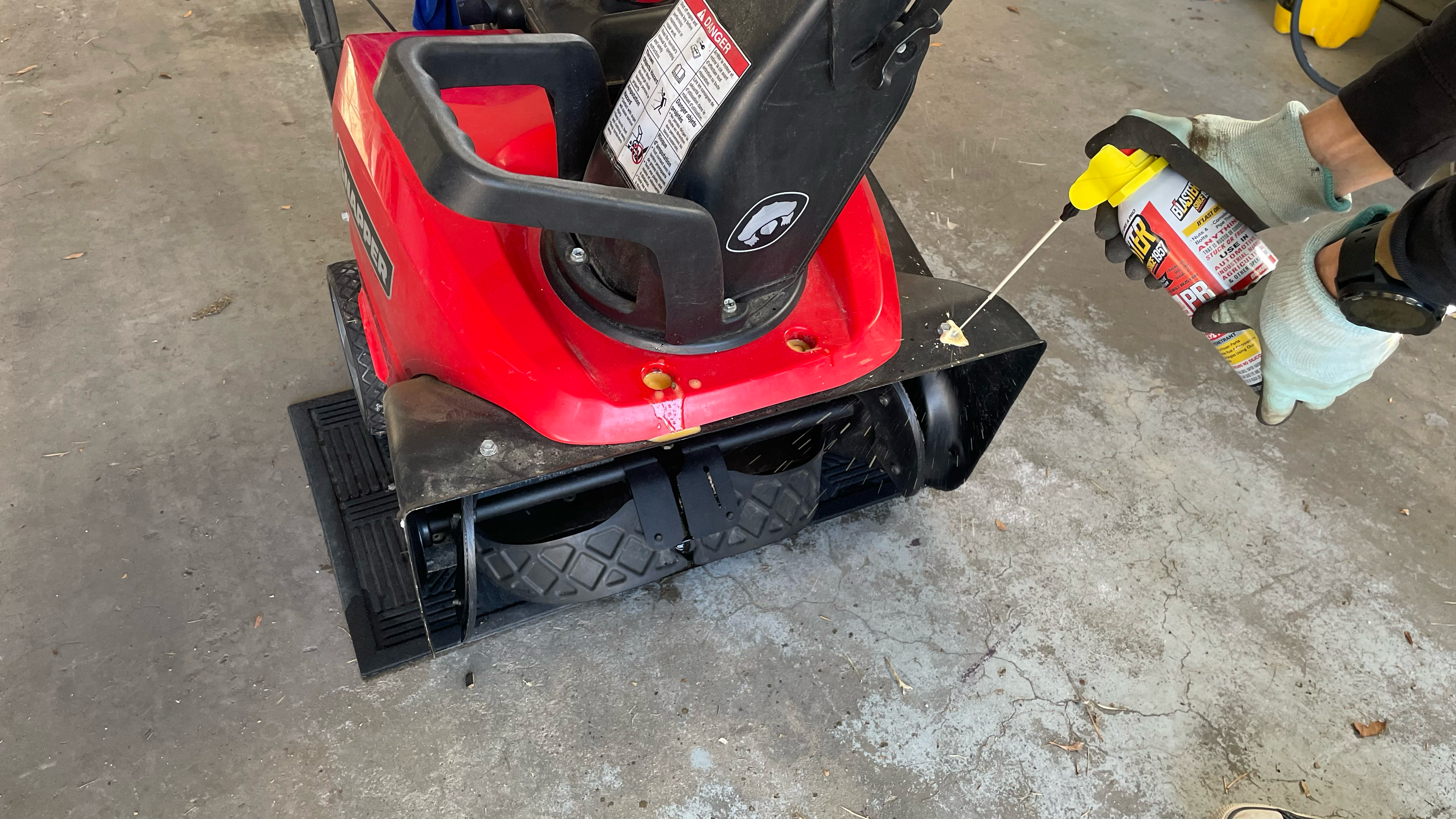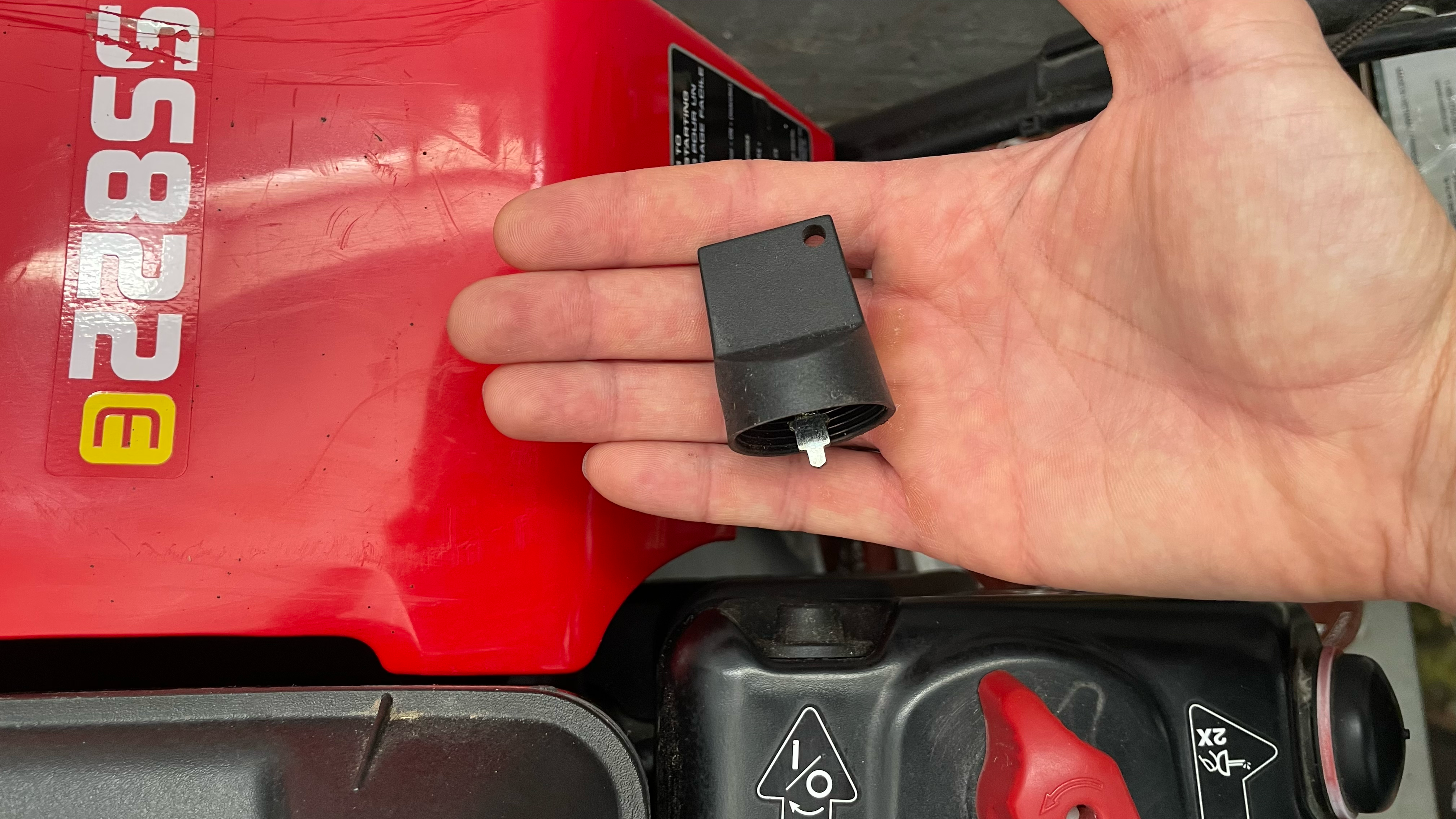How to clean a snow blower in 6 simple steps
A snow blower works at its best when clean and well-maintained

Winter arrives year after year, and with it comes a healthy dose of snow removal responsibilities. And if your region gets a lot of snow, a snow blower is a must. The best snow blowers make light work out of back-breaking manual snow removal, but they take a lot of punishment year after year. That’s why proper maintenance and cleaning of your snow blower is essential for great performance year after year.
It’s easy to think of your snow blower as any other power tool; once you use it, you put it away and don’t think about it until you need it again. But all of that snow and water throughout the season can take its toll on a snow blower if you don’t properly clean it. Your snow blower can form rust and corrosion on bolts, blades, and cables, eventually leading to failure. A good cleaning and proper maintenance will keep it ready for this winter and many winters to come.
We spoke with snow expert Gene Caballero, co-founder of GreenPal, to help guide us through the best way to clean a snow blower. "It's advisable to clean your snow blower after each use to prevent the build-up of snow and ice, which can harden and become more difficult to remove over time," Caballero explains.
Reviews
Whirlpool 24" Stainless Steel AI Dishwasher Review
Napoleon TravelQ PRO285 Portable Gas Grill review
Dreame L40 Ultra Robot Vacuum Cleaner and Mop review: almost hands-free cleaning
GE Profile Smart Mixer with Auto Sense review: a powerful, thorough mixer
Echo eForce DPB-2500 review: a leaf blower as a snow removal tool?
DPAS-2100 + Pro Paddle Attachment review: a new way to remove snow this winter?
Midea MAD53109APK 5.5QT Air Fryer review: a small, simple, and highly effective option
Eureka J15 Pro Ultra Robot Vacuum review: hands-free cleaning for busy families
You’ll need a few items to clean and prepare your snow blower for the season. And the good thing is you can find most things in your garage or on Amazon. In this guide, we’ll walk you through the steps to properly clean your snow blower so it’s ready to take this winter and the many winters that follow.
Gene Caballero grew up living in South America and Middle Tennessee. He has a MBA in Finance and worked as a corporate sales coach for a Fortune 50 company. He enjoys playing piano and is an avid marathoner. Gene’s role on the GreenPal team is to ensure every GreenPal customer is satisfied with their experience.
Quick steps: How to clean a snow blower
- Remove the start-up key or spark plug from the engine
- Spray off any dirt or grime with a hose if necessary, then dry completely
- Spray Fluid Film on rusted bolts, the auger, and the scraper (top and bottom of scraper), as well as outside crevices and joints
- Spray Silicone Lubricant on augers, in the mouth of the snow blower, and throughout the chute, as well as the outside bod
- If applicable, spray tires and hubcaps with WD-40
- Wipe down the engine and handles with a rag
Step by step guide: How to clean a snow blower
1. Remove start-up key or spark plug

Be sure to remove the startup key or spark plug before you begin. You want to remove the potential of an accident startup of the engine. Removing the key or spark plug makes it safe to clean inside the mouth of the snow blower.
2. Rinse if needed

If your snow blower is dirty from the prior year, take your snow blower outside on your driveway and give it a good hose down. Remove any excess dirt, grass, or grim from the blower, and dry it off completely with a towel.
To remove any hardened snow or ice, Caballero explains that you can use "a brush or plastic scraper to gently remove snow and ice from the auger, chute, and other parts." He also advises avoiding metal scrapers to prevent damage.
3. Spray augers and scraper and any rust spots

Take Fluid Film spray and apply it to the auger, bolts, and virtually any metal area inside the mouth of the snow blower. You’ll also want to spray the scraper, both the top and bottom (the part that meets the ground), as well as any joints and crevices along the body of the snow blower. This helps prevent rust and corrosion.
4. Spray mouth with a moisture barrier

Take the Silicone Lubricant and spray it all over the mouth, the entire chute, and the outside body of the snow blower. This creates a light moisture barrier and prevents snow and water from sticking to the snow blower. You don’t need to wipe off the mouth of the snow blower, but you should use a rag to wipe the spray on the outside of the body. This simultaneously helps spread the barrier and cleans the snow blower. Don’t spray the engine.
5. Spray tires with WD-40

Spray hubcaps and the rubber on the tire with WD-40. Wipe off hubcaps with a rag to remove any stains. This simultaneously shines up your tires, cleans them, and creates a barrier to moisture. If you have plastic tires like on a single-stage snow blower, this step is not necessary.
6. Wipe down engine, cables and handles

Take the rag and wipe off any extra dirt or grime from the engine. You can wipe down the components of the engine that don’t get hot with a lubricant, but it is not necessary. Doing that can provide a shine to the engine.
Caballero explains the importance of regular cleaning and maintenance: "Keeping your snow blower clean and well-maintained not only extends its lifespan but also ensures it operates efficiently and safely each time you use it."
How to clean a snow blower: FAQs
How do you unclog a snow blower?
Turn off the engine and use a chute cleaner or broomstick to unclog the snow blower and chute. Never use your hands.
How do you get rust off a snow blower?
You can use a wire brush, sandpaper, and a rag to remove rust. After you’ve removed the rust, use Fluid Film spray to prevent future rusting.
What can you spray on a snow blower to stop it from sticking?
You can use a Silicone Spray in the mouth and chute to prevent snow from sticking. This creates a moisture barrier that not only helps prevent snow from sticking but also protects the snow blower from moisture in the long run.
Sign up to receive the latest news, reviews, buying guides and deals direct to your inbox

With a Bachelor's Degree in Communications and Media from Weber State University, Jonathan Knoder is all about Smart Home and AV tech. He currently works as a Content Manager for AvantGuard Monitoring Centers in Utah. Jonathan has written extensively and at great length about yard care and snow blowers for Top Ten Reviews, and this is his subject area.
